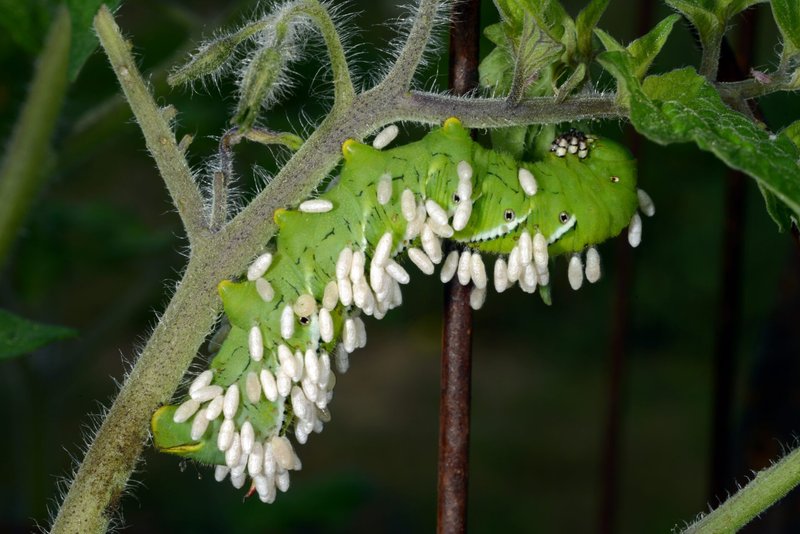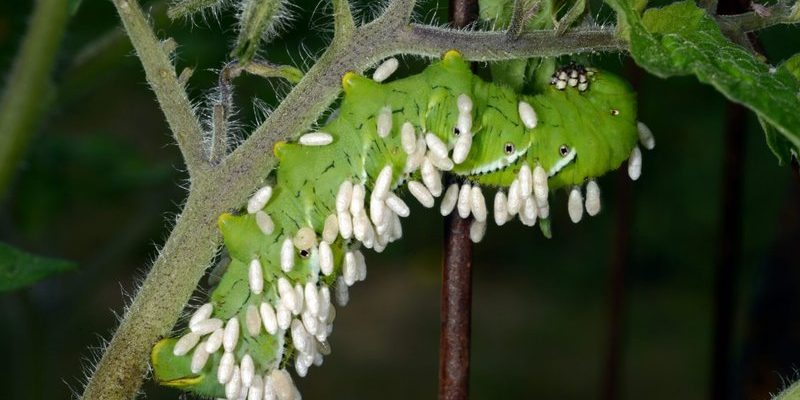
Hornworms, particularly the tomato hornworm, are known for munching on plants, particularly tomatoes. But aside from their appetite for leafy greens, they also have a unique ability to weather various conditions. So, how do these little guys manage to survive harsh weather? Let’s dive deeper and explore their remarkable adaptations and survival strategies.
Understanding Hornworm Resilience
Hornworms are part of the Sphingidae family, and they undergo a complete metamorphosis—meaning they start as eggs, hatch into caterpillars, metamorphose into pupae, and finally emerge as adult moths. This life cycle offers them a crucial advantage when it comes to coping with extreme weather conditions.
Here’s the thing: during the caterpillar stage, hornworms experience rapid growth. This means they have a limited time to feed and grow before they pupate. If the weather turns particularly harsh, they have strategies to avoid or endure unfavorable conditions. For example, they might seek shelter among the leaves or burrow into the soil, which helps protect them from the elements.
Additionally, their color plays a role in their survival strategy. The green hue of hornworms acts as a natural camouflage, blending them into the foliage of tomato plants. This not only keeps them safe from predators but also helps them avoid some weather-related challenges, like the scorching sun.
Water Conservation Techniques
One of the most significant challenges hornworms face in harsh weather is finding sufficient moisture. In hot, dry conditions, staying hydrated is critical for their survival. Hornworms have developed some clever methods for conserving water.
First off, these critters can actively regulate their water loss through specialized structures in their bodies known as spiracles, which are tiny openings that help them breathe. When temperatures rise, hornworms can close these spiracles to minimize water loss, much like how we might hold our breath underwater. This ability allows them to survive longer in dry conditions.
Moreover, hornworms are known to feed on juicy tomato leaves, which are rich in moisture. By munching on these leaves, they not only satisfy their hunger but also hydrate themselves. It’s like having a snack and a refreshing drink all in one go!
Behavioral Adaptations to Temperature Extremes
Temperature changes can be brutal for many insects, and hornworms are no exception. They’ve developed some behavioral adaptations that help them cope with extreme temperatures.
When it gets excessively hot, hornworms tend to become less active during the day and more active in the cooler evenings. This is somewhat similar to how we might choose to stay indoors during a heatwave. By shifting their feeding patterns, they can avoid the worst of the midday sun, reducing the risk of overheating.
On the flip side, when temperatures drop, hornworms can be vulnerable to the cold. To combat this, they often burrow into the soil or find shelter under leaves. This not only provides insulation but also helps them avoid frost, which can be fatal for many insects.
The Role of Camouflage in Weather Survival
As mentioned earlier, the green coloration of hornworms doesn’t just serve as protection from predators; it also plays a role in their survival during harsh weather. When rainstorms hit, the moisture can change how plants look, altering the colors of leaves, and hornworms’ green bodies blend seamlessly with their environment.
Being hidden is crucial. Just like how a sneaky ninja can evade detection, hornworms can dodge both predators and the harsh elements. If they’re well-camouflaged, there’s a better chance they can ride out inclement weather without getting washed away or eaten.
Even during heavy rains, hornworms can cling tightly to their food sources, reducing the chance of being swept away. It’s as if they have a built-in safety harness to help them hang on tight!
Life Cycle Timing and Weather Adaptation
One of the smartest strategies hornworms employ relates to the timing of their life cycle. They emerge as eggs at certain times of the year when conditions are just right for their development. If the weather forecast shows a brutal season ahead, they can synchronize their life cycle to avoid those harsh conditions.
For instance, if cold weather is expected, they may delay the pupation process to ensure that they are not caught in freezing temperatures. This flexibility allows them to adapt to their environment effectively. Essentially, they’re like nature’s little weather forecasters—except they can’t check a smartphone but rely on instinct instead.
This timing also helps ensure that they emerge as moths when temperatures are warmer, allowing them to find mates and lay eggs in ideal conditions. It’s all about being ahead of the game!
Community and Social Behavior
Hornworms are mostly solitary creatures, but when they do encounter others, there’s an interesting aspect of community behavior that comes into play. During periods of harsh weather, hornworms may aggregate in groups, which can provide some protection against the elements.
When they’re together, they can create a microenvironment that’s slightly more stable than outside conditions. Think of it as gathering around a campfire on a chilly night; the warmth and closeness can make a huge difference in survival. While this behavior isn’t extensively documented, it’s an intriguing possibility that hornworms might also benefit from being near others during tough weather.
While they might not communicate like humans, there’s a sense of community that can enhance their survival prospects during unpredictable weather.
Hornworms are more than just garden pests; they’re impressive little creatures that showcase some extraordinary survival skills. From water conservation techniques to clever behavioral adaptations, these caterpillars have a variety of ways to weather the storm—literally.
While they might not have a remote control to sync up with favorable conditions, they certainly have their own natural instincts and strategies to navigate the harsh realities of their environment. So next time you spot a hornworm munching away, you might appreciate it as more than just a pesky caterpillar; you’ll see it as a true survivor of nature’s challenges.

